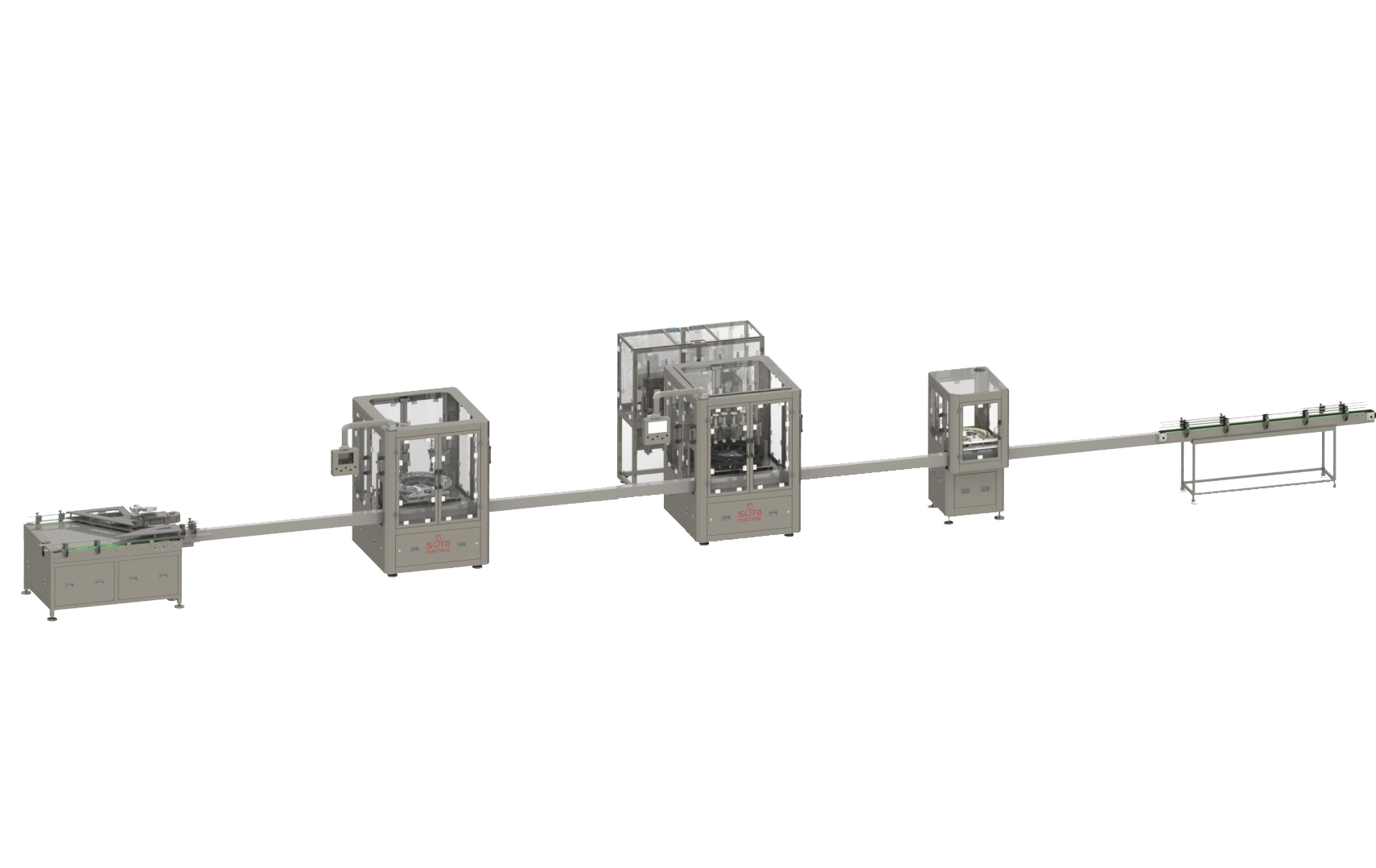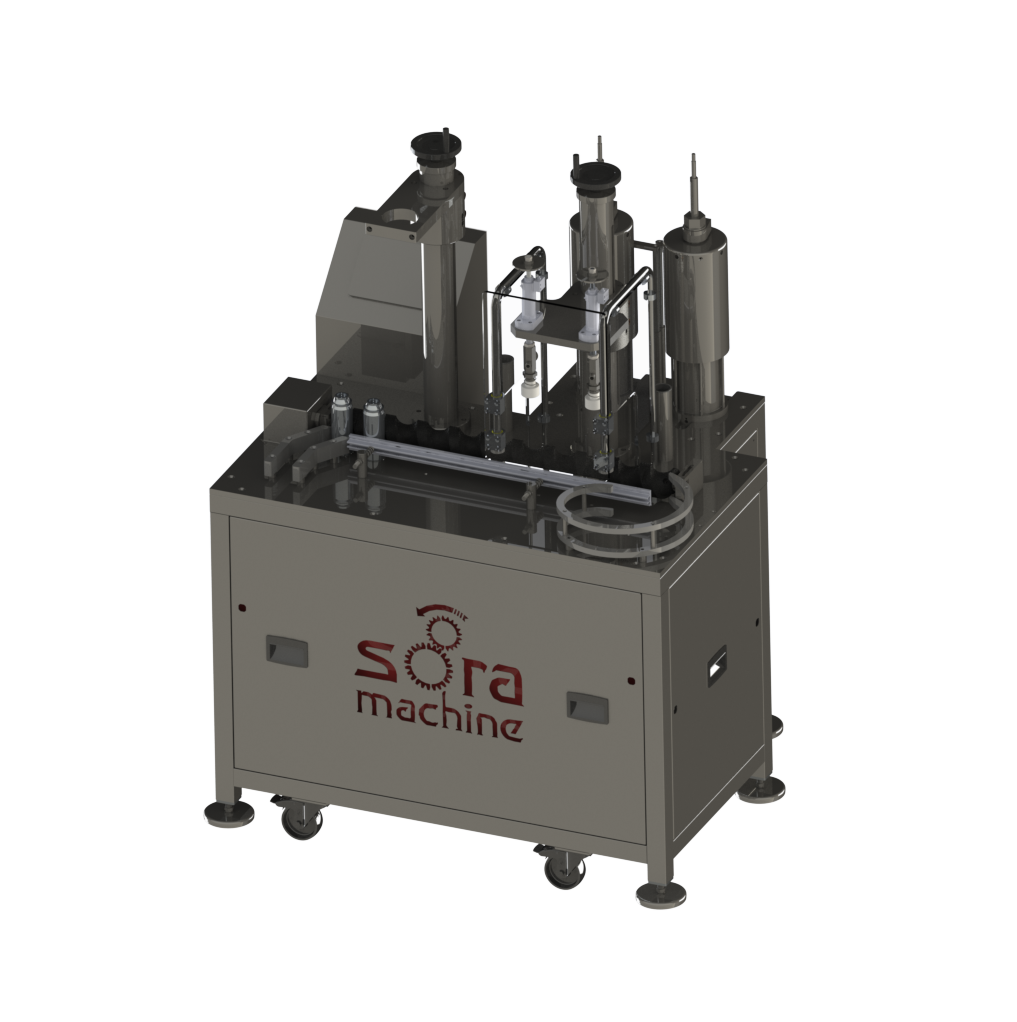BOV Technologies: How to Provide Innovative Solutions in Aerosol Filling Processes?
In the aerosol industry, technologies developed to enhance product quality, extend shelf life, and minimize environmental impact are of great importance. Bag-On-Valve (BOV) technologies are among the systems that play a significant role in achieving these goals. Thanks to the advantages they offer compared to traditional aerosol filling methods, BOV systems are gaining increasing interest from both production and consumer perspectives.
What are BOV Technologies and What are Their Basic Principles?
Bag-On-Valve is a filling system where the content is stored in a flexible bag placed directly inside the aerosol can, and the propellant gas is kept in a separate compartment. In traditional systems, the product and propellant gas are in direct contact, whereas in BOV technology, the product does not come into contact with the gas thanks to the bag inside it. This situation provides significant advantages such as preserving product quality and preventing the deterioration of taste, smell, or chemical properties.
What are the Basic Components of BOV Systems?
BOV systems consist of several basic components:
- Inner Bag: This is the bag where the product is stored, made of flexible and durable material. This bag prevents the product from directly contacting the propellant gas.
- Valve: It has a complex structure that controls both the distribution of the product and the propellant gas.
- Propellant Gas Compartment: Located separately from the product, this compartment allows the propellant gas to be used as the driving force for the product during the filling process.
What are the Advantages Compared to Traditional Filling Methods?
BOV technologies offer many advantages compared to classic aerosol filling methods. First of all, thanks to the separation of the product and the propellant gas, the product quality is preserved for a long time. This is of great importance, especially in food, cosmetic, and pharmaceutical products. Other advantages include:
- Increased Product Shelf Life: Since the product does not directly contact the gas, oxidation and other chemical reactions are minimized.
- Improved Hygiene and Safety: Thanks to the closed system structure, the risk of contamination from external factors is reduced.
- Ease of Use: Being a single integrated system allows users to use the product more practically and smoothly.
- Economic Efficiency: Reducing losses during the production phase and using less material provides a cost advantage.
How Does it Increase Product Quality?
BOV systems play a critical role in increasing product quality. The fact that the product does not come into contact with the propellant gas prevents reactions that lead to deterioration in the content and loss of properties such as taste and aroma. In addition, the use of an inner bag helps the product remain stable. This situation offers significant advantages, especially in the formulation of sensitive products and products requiring preservatives.
What are its Environmental and Economic Aspects?
In today’s industry, environmental impacts and sustainability are becoming increasingly important. BOV technologies reduce the rate of waste thanks to the long shelf life and stability of the product. Gas leaks or product losses that may occur in traditional systems are minimized with BOV systems. Economically, cost advantages are also achieved thanks to less material waste and more efficient production processes.
What are its Usage Areas and Application Examples?
BOV technologies offer a wide range of applications. They are widely used, especially in the cosmetics, personal care, food, and pharmaceutical sectors. These systems are preferred for the advantages they offer in protecting the sensitive formulations of products. For example:
- Cosmetics and Perfume Industry: Preserving the quality of the product for a long time is critical to prevent the original scent and texture of the product from deteriorating.
- Food Products: BOV systems play an important role in preserving the freshness and nutritional value of the content.
- Pharmaceutical Products: In drug formulations, the separation between the product and the propellant gas increases the stability and effectiveness of the product.
What are the Future Innovations and Trends?
BOV technologies are evolving with the constantly developing trends of automation and digitalization. In the future, BOV systems equipped with artificial intelligence-supported monitoring systems and advanced sensor technologies will become even more precise and efficient. These innovations will ensure a decrease in production errors, an increase in product quality, and the minimization of environmental impacts. In addition, the use of sustainable materials and recyclable systems will also have an important place in the future development of BOV technologies.
What Effects Do BOV Technologies Create in Aerosol Filling Processes?
Bag-On-Valve technologies are an innovative approach that offers significant advantages in aerosol filling processes for both production and consumers. The separation of the product and the propellant gas significantly increases the product’s quality, shelf life, and stability. Factors such as improved safety, hygiene, and economic efficiency make this technology a preferred method in modern production processes. In addition, BOV systems stand out in terms of reducing environmental impacts and achieving sustainable production goals. Supported by future-oriented innovative solutions, this technology will continue to raise quality and safety standards in the aerosol industry.
BOV technologies provide significant contributions in many areas such as preserving product quality, increasing production efficiency, and reducing environmental impacts. The advantages they offer compared to traditional methods make them a preferred choice for both manufacturing companies and consumers, and it is predicted that this technology will develop further with future innovations. The use of BOV systems in modern production facilities is not only a technological preference but also an indication of a sustainable production approach that prioritizes quality and safety.
This comprehensive evaluation addresses, with a questioning logic, how BOV technologies offer innovative solutions in aerosol filling processes, what advantages they stand out with, and in which directions they can evolve in the future. For companies seeking quality, safety, and sustainability in production, BOV systems are solidifying their place as an indispensable technology.





